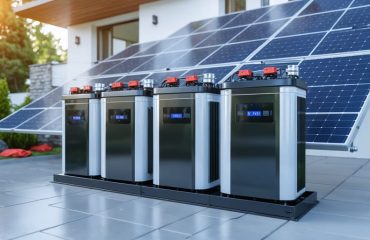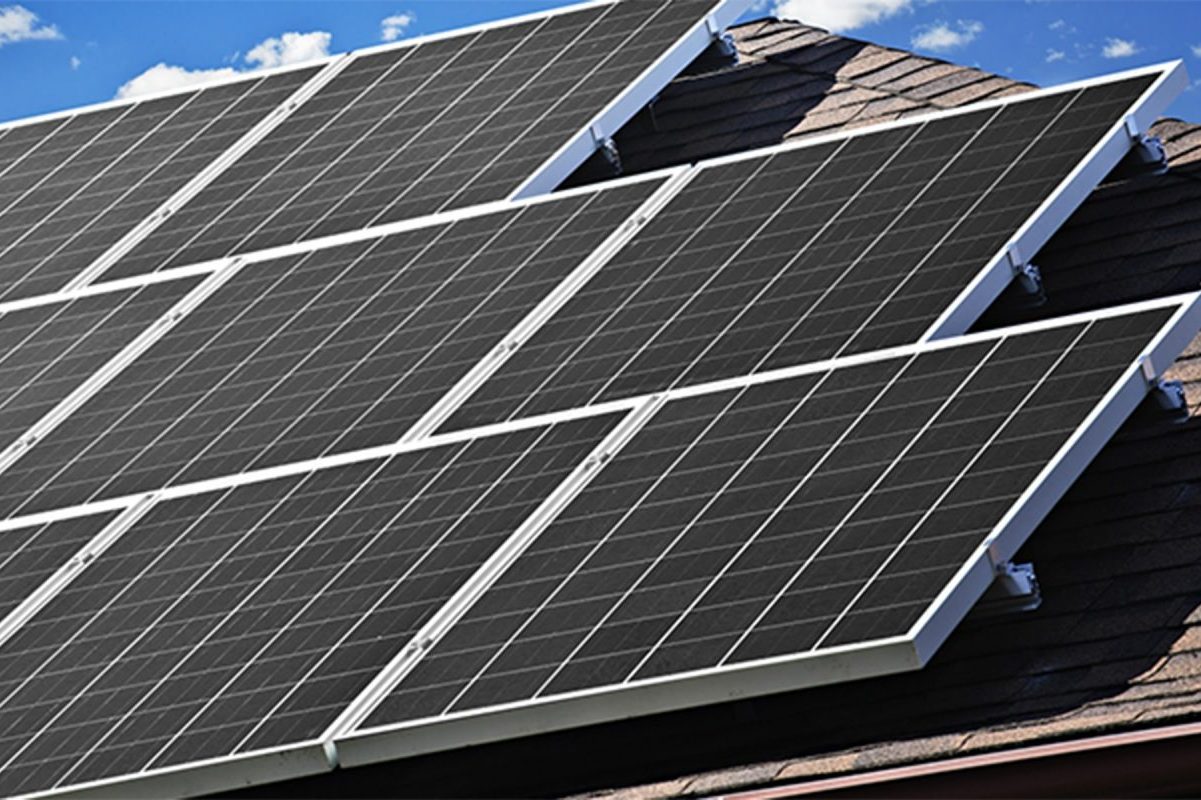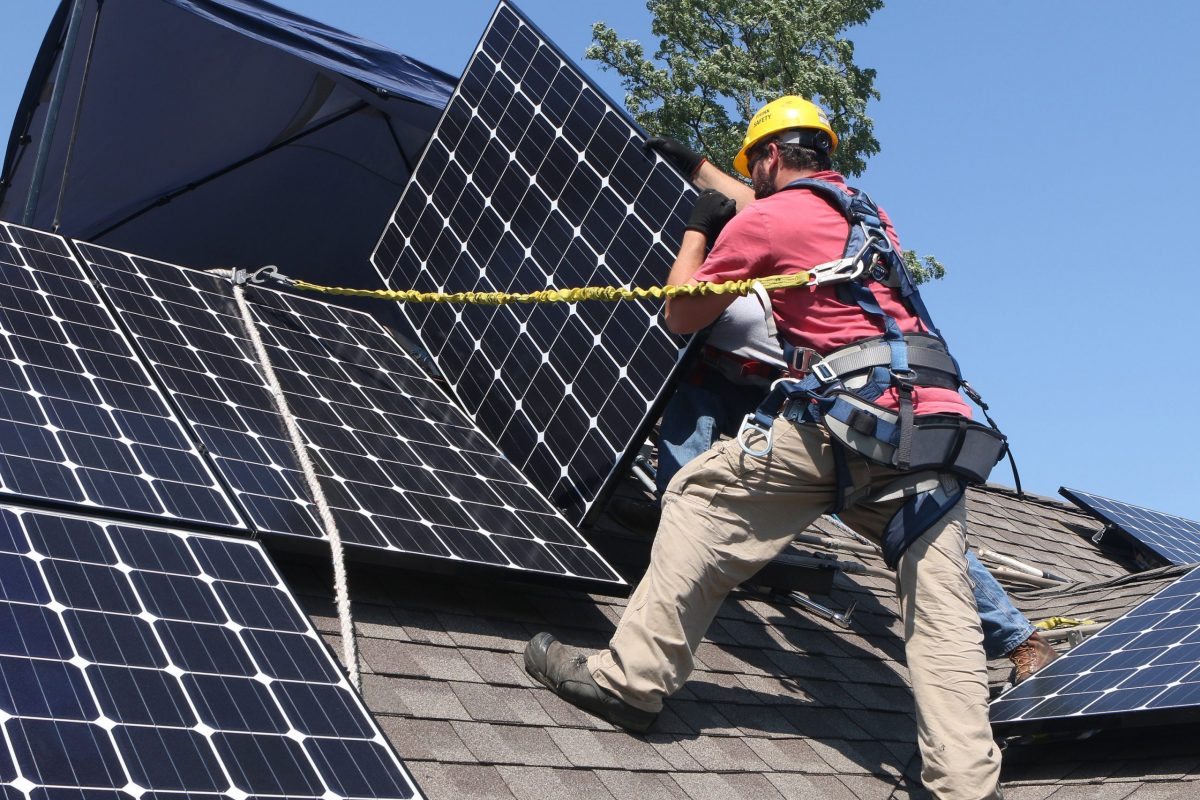Discover the game-changing potential of battery energy storage systems (BESS) in the era of renewable energy. As solar power gains traction, BESS emerge as a pivotal solution to overcome intermittency challenges and enhance grid stability. This article delves into the advantages and disadvantages of BESS, shedding light on their role in shaping a sustainable future. From increased energy independence to potential safety concerns, we explore the multifaceted impact of this technology. Join us as we unravel the complexities of BESS and empower you to make informed decisions in the evolving landscape of clean energy.
How Battery Energy Storage Systems Work
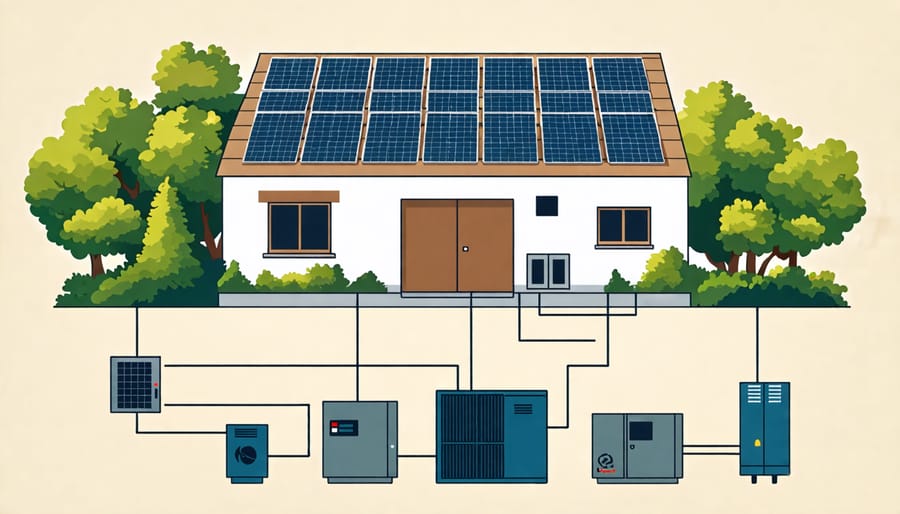
Charging and Discharging Cycles
Battery energy storage systems (BESS) work in harmony with your solar panels to optimize energy use. During the day, when your solar panels generate more electricity than your home needs, the excess energy is stored in the BESS. This charging process allows you to capture and save the clean energy that would otherwise be sent back to the grid. When the sun sets or on cloudy days, your BESS switches to discharging mode, providing your home with the stored solar energy. This cycle of charging and discharging enables you to maximize your solar energy use, reduce your reliance on the grid, and even power your home during outages. With a BESS, you can take control of your energy consumption, save money on utility bills, and contribute to a greener future by making the most of the solar energy your home produces.
Battery Types and Capacities
The main battery types used in residential battery energy storage systems are lead-acid and lithium-ion. Lead-acid batteries, known for their affordability and reliability, typically offer storage capacities ranging from 2 to 10 kWh. On the other hand, lithium-ion batteries, which are more compact and efficient, can provide storage capacities between 5 and 20 kWh. The exact capacity you need depends on your home’s energy consumption and the amount of solar energy you aim to store. Consulting with a professional installer can help you determine the optimal battery type and capacity for your specific needs and budget.
Key Advantages of Battery Energy Storage
Energy Bill Savings
Battery energy storage systems help homeowners maximize their solar investment by storing excess energy generated during peak sunlight hours for later use. This stored energy can be used to power your home during periods of low solar production or at night, reducing your reliance on the grid and lowering your energy bills. By utilizing more of your self-generated clean energy, you can significantly cut down on the amount of electricity you need to purchase from utility companies, which often charge higher rates during peak demand hours. Additionally, some utility companies offer net metering programs that allow you to sell your excess solar energy back to the grid, further increasing your savings. With a BESS, you can take full advantage of these programs by storing excess energy until it’s most profitable to sell it back, ensuring you get the best possible return on your solar investment while minimizing your carbon footprint.
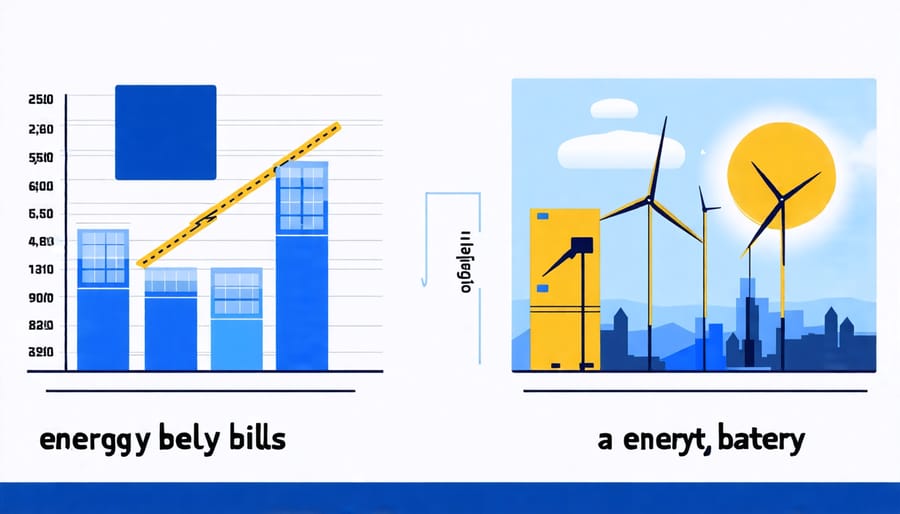
Backup Power and Energy Security
Battery energy storage systems offer a reliable backup power solution during grid outages, ensuring energy security for homeowners. In the event of a power failure, a properly sized BESS can seamlessly switch to backup mode, supplying stored energy to keep essential appliances and devices running. This uninterrupted power supply is especially crucial for those who work from home, rely on medical equipment, or live in areas prone to frequent outages. By integrating a BESS with a solar PV system, homeowners can achieve greater energy independence and resilience, knowing they have a dependable energy source even when the grid is down. Moreover, with intelligent energy management systems, BESS can prioritize critical loads during outages, extending the duration of available backup power. As extreme weather events become more common, investing in a BESS for backup power provides peace of mind and enhances overall energy security for households.
Supporting Sustainability Goals
Battery energy storage systems (BESS) are a key component in supporting sustainability goals and reducing our carbon footprint. By storing excess solar energy generated during the day, BESS enable homeowners to utilize clean, renewable power even when the sun isn’t shining. This reduces reliance on fossil fuel-based grid electricity, minimizing greenhouse gas emissions and contributing to a greener future.
Moreover, BESS help balance the load on the electrical grid by reducing demand during peak hours. This not only eases strain on the grid infrastructure but also decreases the need for additional power plants, further curbing carbon emissions. As more homes adopt solar-plus-storage solutions, the cumulative impact on sustainability is substantial.
Investing in a BESS is an empowering way for environmentally-conscious homeowners to take control of their energy consumption and actively contribute to the transition towards a renewable energy future. By embracing this innovative technology, individuals can lead by example and inspire others in their community to adopt sustainable practices, creating a ripple effect of positive change.
In essence, battery energy storage systems are not just a smart financial investment for homeowners; they are also a powerful tool in the fight against climate change, enabling each of us to play a role in building a cleaner, more sustainable world for generations to come.
Potential Drawbacks to Consider
Upfront Costs
One of the main disadvantages of battery energy storage systems is the significant initial investment required. The cost of lithium-ion batteries, which are the most common type used in residential BESS, can be substantial. However, it’s important to consider the long-term savings and benefits that come with investing in a BESS. By storing excess solar energy during the day and using it during peak hours or at night, homeowners can significantly reduce their reliance on the grid and lower their electricity bills over time. Additionally, as battery technology continues to advance and production scales up, prices are expected to decrease in the coming years, making BESS more accessible to a wider range of homeowners. While the upfront costs may seem daunting, the long-term financial and environmental benefits of a BESS can make it a worthwhile investment for those committed to sustainable living.
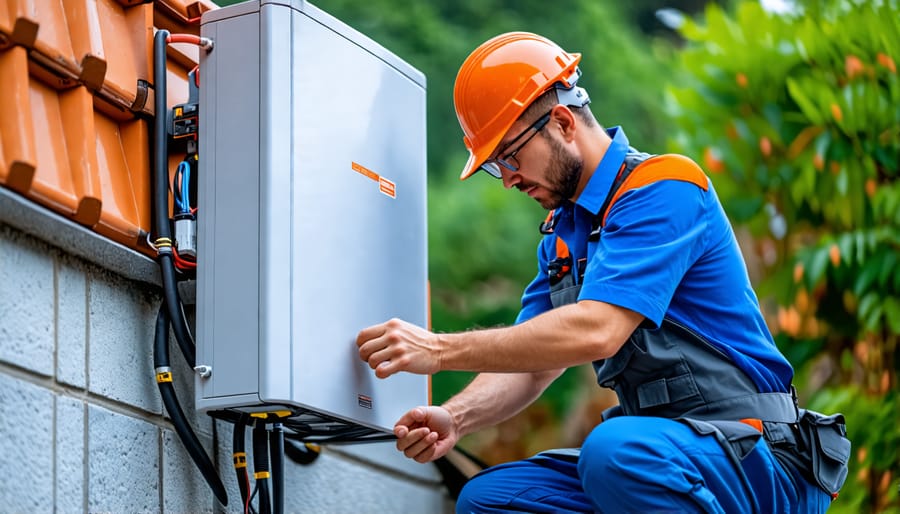
Space Requirements and Maintenance
Battery energy storage systems require dedicated space for the battery bank, inverter, and associated components. The exact footprint depends on the system’s capacity, but a typical residential BESS may need around 20-40 square feet of floor space, often in a garage or utility room. Proper ventilation and temperature control are crucial for optimal performance and longevity. Regular maintenance, such as cleaning connections, monitoring charge levels, and replacing components as needed, helps ensure the system’s reliability and efficiency. While modern BESS are designed for minimal upkeep, homeowners should factor in the time and potential costs associated with maintaining their investment in clean energy storage.
Recycling and Environmental Impacts
Battery recycling is a crucial aspect of minimizing the environmental impact of battery energy storage systems. While there are recycling challenges associated with lithium-ion batteries, the industry is making strides in developing more efficient and eco-friendly recycling processes. Proper disposal and recycling of batteries can help recover valuable materials, reduce waste, and minimize the need for mining new resources. As the demand for battery storage grows, it is essential for manufacturers, policymakers, and consumers to prioritize the development of sustainable battery lifecycle management practices to ensure a greener future for energy storage technology.
Choosing the Right Battery Energy Storage System
When choosing a battery energy storage system, consider the battery type, as different chemistries offer varying performance characteristics. Lithium-ion batteries are popular for their high energy density, long lifespan, and low maintenance requirements. However, lead-acid batteries may be more cost-effective for certain applications. Battery size is another crucial factor, as it determines the amount of energy your system can store and supply during outages or peak demand periods. Assess your household’s energy consumption and future needs to select an appropriately sized BESS.
Manufacturer reputation and warranty coverage should also influence your decision. Opt for well-established brands with a proven track record of producing reliable, high-quality systems. Look for comprehensive warranties that cover performance and defects for an extended period, typically 10 years or more. Additionally, consider the system’s scalability, as your energy needs may change over time. Modular designs allow for easier expansion, ensuring your BESS can adapt to your evolving requirements. By carefully weighing these factors, you can select a battery energy storage system that optimally meets your household’s unique energy needs and budget.
Conclusion
Battery energy storage systems offer a promising solution for homeowners looking to optimize their solar energy usage and reduce reliance on the grid. While the advantages of BESS, such as increased energy independence, cost savings, and environmental benefits, are compelling, it’s essential to consider the potential drawbacks, including upfront costs, maintenance requirements, and limited storage capacity. As technology advances and costs continue to decline, BESS will likely become an increasingly attractive option for many homeowners. Ultimately, the decision to invest in a battery energy storage system depends on individual energy needs, budget, and long-term goals. By carefully weighing the pros and cons and consulting with experienced professionals, homeowners can make an informed choice that aligns with their unique circumstances and contributes to a more sustainable future.




